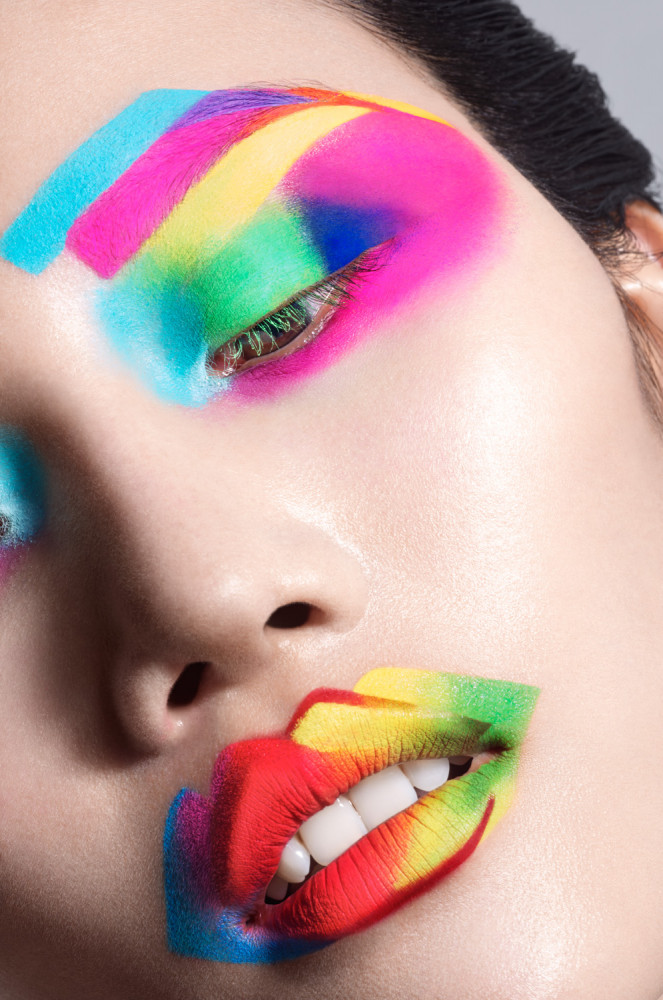
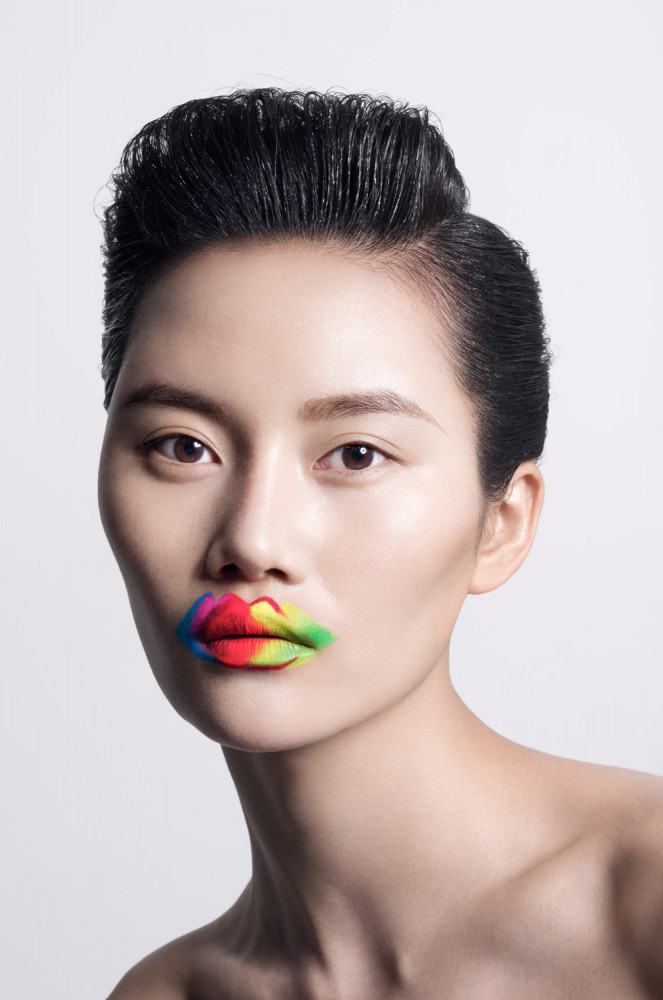
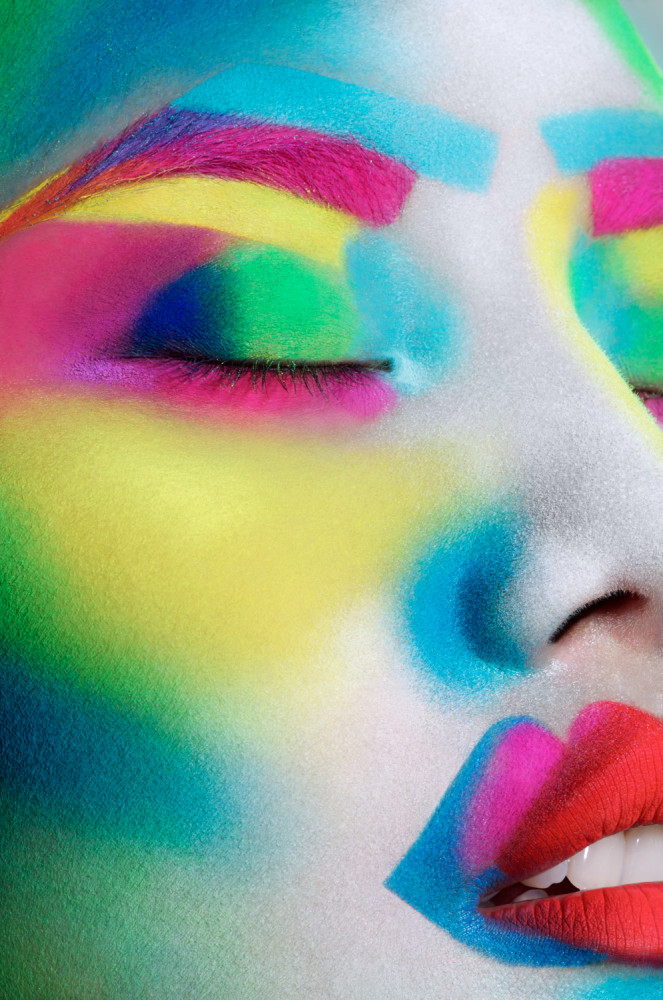
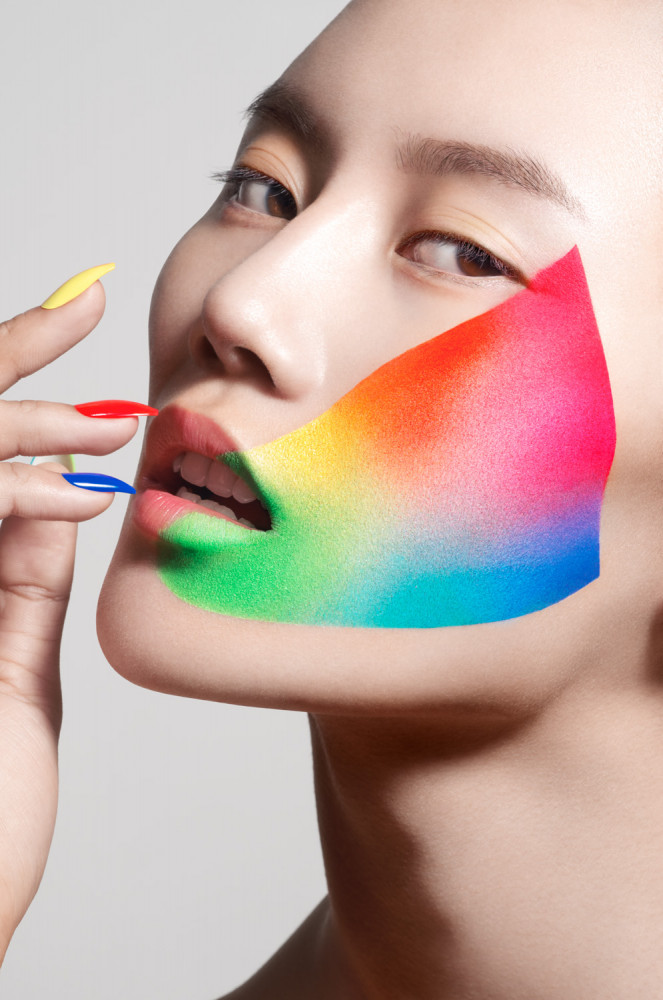
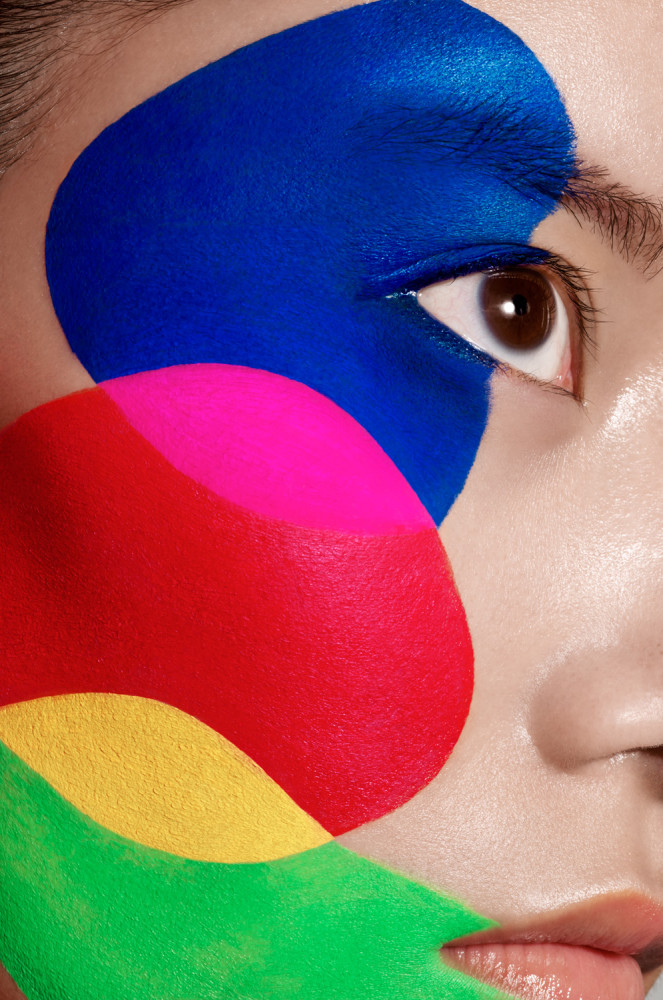
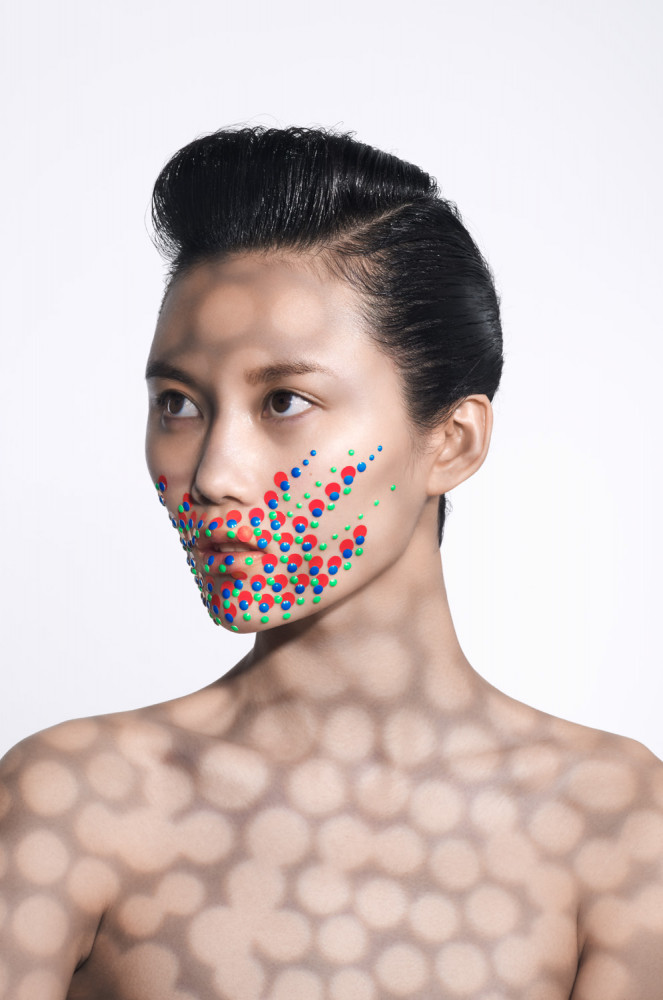
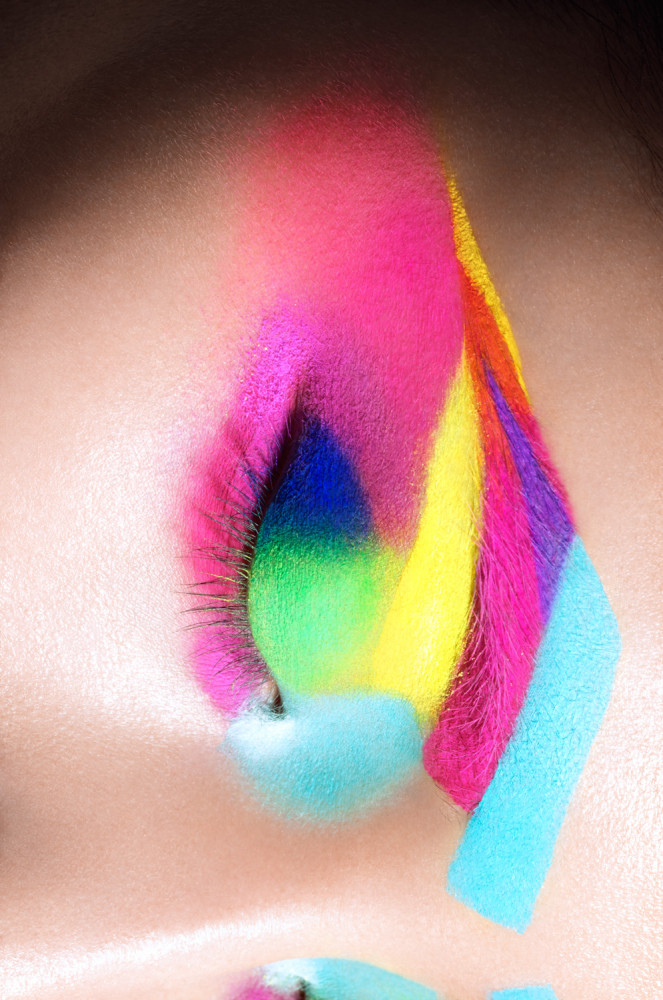
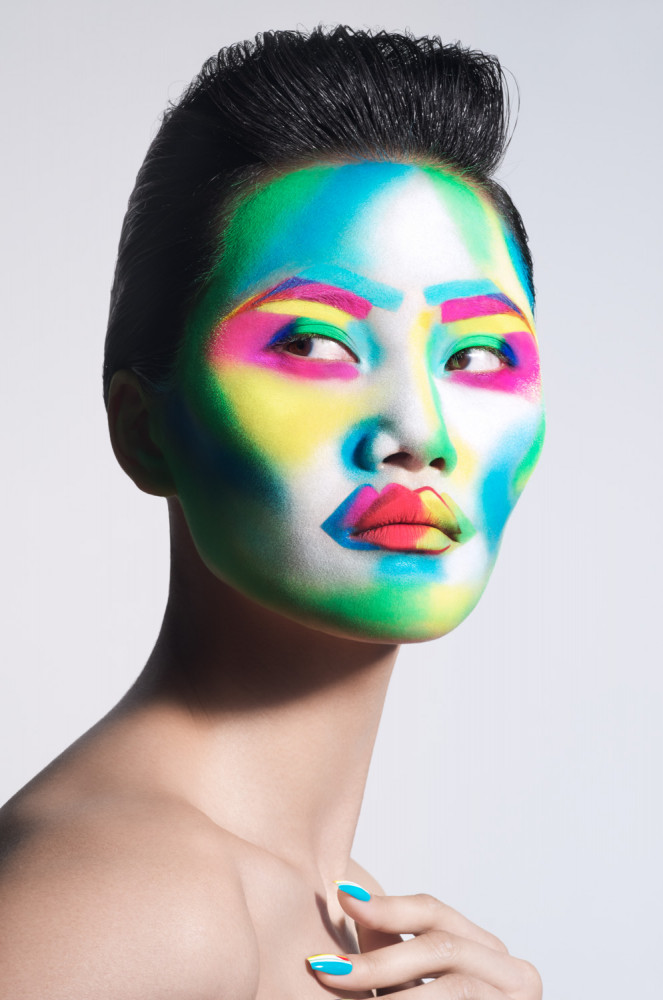
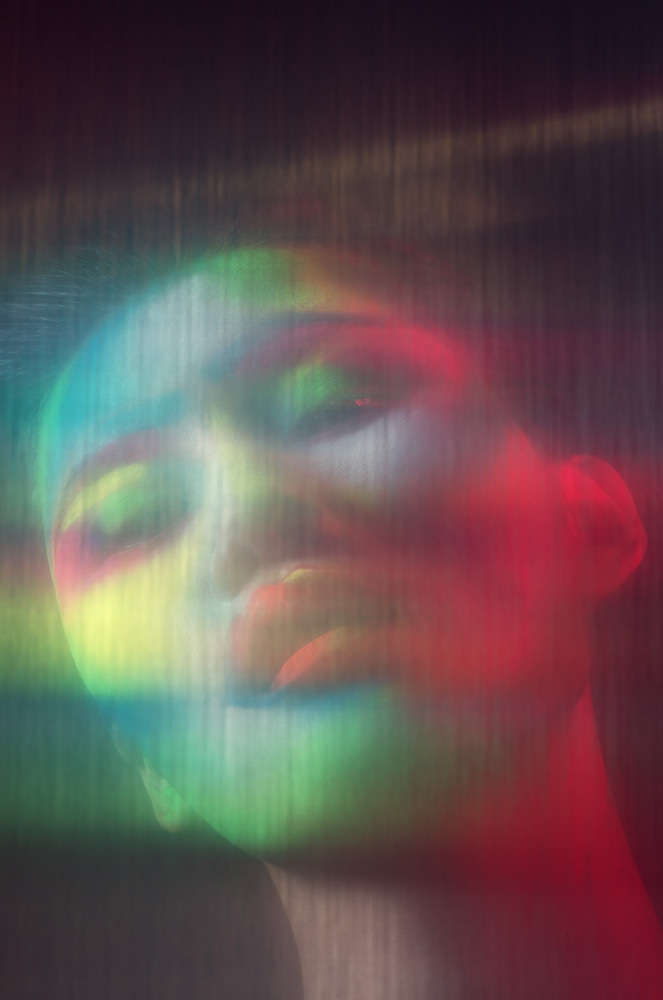











INTERVIEW
Arved Colvin-Smith

PHOTOGRAPHY Arved Covin-Smith MAKEUP Andrew Gallimore @ CLM Hair & Make-up using NARS Cosmetics HAIR Mark Fancome Painter @ CLM Hair & Make-up using EVO NAILS Robbin Tomkins 2 Premier Hair and Make-Up using OPI Nail Lacquer PHOTOGRAPHERS ASSISTANT Daniel Cope MAKE UP ASSISTANT Guy Common MODEL Wen @ IMG CAMERA Leica S (Typ 007) with APO-Macro-Summarit-S 120 f/2.5 (CS)
In his ‘Chromaticity’ beauty series, Arved Colvin-Smith delights the viewers with unusual chromatic variations. Makeup artist Andrew Gallimore put the colour palette together, inspired by technical errors in broken RGB files.
As a beauty photographer you are quite reliant on the work of make-up artists. How does such a collaboration come about to ensure a successful outcome?
For me everything is about collaboration. Any of the team can come to me with an idea and we can work on developing it together. I spend a lot of time before the shoot speaking with the crew and referencing the different elements: it's important that all the elements of a shoot – model, hair, make-up, nails, styling, set design, lighting, everything – work together in harmony. It’s great when everyone turns up on set knowing what’s happening and are full of ideas.
Is beauty photography more challenging than fashion photography?
No.
Are you given enough freedom when you’re working on a commissioned assignment, or do you feel limited in some way? Or do you get booked because of your style?
Not always. I actually enjoy having a brief to work to. It’s often easier and there is usually enough flexibility to try some things that are different and exciting. On the other hand it can be quite daunting to have total freedom. Once there is an idea it’s great fun to develop it, to play with it in your mind and see what you can come up with.
For the S magazine, you worked with the renown make-up artist Andrew Gallimore. How did this collaboration come about? What do you find special about him?
Andrew is an amazing make-up artist. It’s a joy to work with him: he’s immensely creative, you can give him a kernel of an idea from which he will create dozens of amazing concepts. It's always a wonderful collaboration.
What is the idea behind ‘Chromaticity’?
Andrew and I met up and threw a few ideas around; and we were both drawn to some misaligned RGB colour images which became the foundation for the shoot. I guess it's a juxtaposition – the mistake has taken centre stage.
You’ve been taking photographs for some years now. Has your style changed in some way, or how do you see your own development?
It has definitely evolved. I love to experiment and try new things, some work well some not so well. I get a lot of enjoyment from working things out. There are a lot of outside influences that also contribute to my work. Whatever I happen to be fascinated by at the time tends to find its way into my work, which means it will naturally change over time.
You often supplement your photo shoots with videos. Is it an extension of your photography or does it have another purpose?
I love to produce a sort of teaser or trailer along side the photo shoot, like they do with movies. They seem to get a great reaction and drive people on to want to look at the still series. I’m currently working on more stand alone video projects as well, so watch this space!
Regarding ‘Chromaticity’, it was the first time you used the SL for your video. Was it a different experience to using the medium format S?
We set up the SL on a rig, so it was effectively a dedicated video camera, which worked brilliantly.
Was the S, however, the better choice for the portraits and the series in general? Why?
I've used the S a lot, so feel very comfortable shooting with it, which is very important to me. If I’m comfortable with the camera it’s almost as if it isn't there and I can concentrate on what is happening in front of the lens.